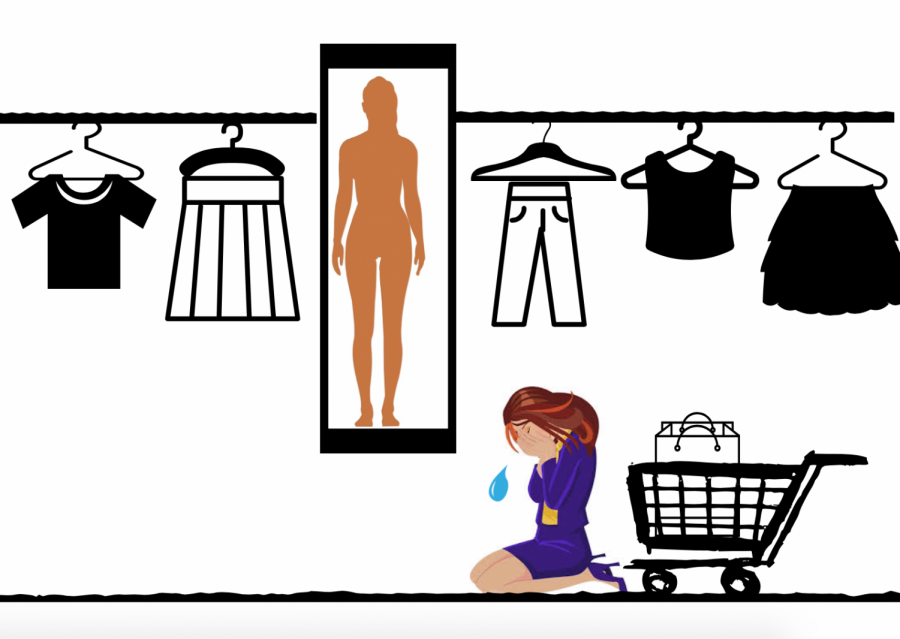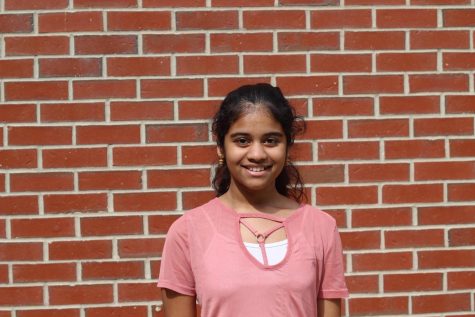Mannequins reinforce impossible standards, lead to low self-confidence
Assistant Opinion Editor Pranitha Polavarapu writes that girls are held to an attainable standard which leads to low self confidence.
June 4, 2018
Long necks, unattainable waists, and exceeding arms posed at every store display window. Intended to attract young eyes, they were a small representation to how the rigid limitations continue to exist on how women and girls should look like.
Girls are constantly pressured to have the “perfect” body type. We are sometimes told to lose weight or gain weight, which can lead to insecurities. There are countless of us who starve themselves or eat more to try to be “perfect.” According to National Eating Disorders, a sample used for study showed that about 13 percent of girls suffer from a eating disorder by age 20. That is such a high percentage, since it is relating to girls from around the world.
Fortunately, we’ve become aware of these issues as both women and girls are being told by influential figures to be proud of themselves because embracing the love for yourself is significant for leading a healthy life. Famous artists such as Adele, Jennifer Lopez, and athletes like Serena Williams have voiced that body positivity should be incorporated more in society.
However, I sense a contradictory message being expressed to young girls each time they walk in a mall or go into a retail store. The mannequins enforce an ideal body type instead of promoting body confidence. I found it absolutely ridiculous when I saw mannequins that all look the same and showcase only one type of body, therefore only representing some women instead of all. The smaller structures of these models spread the idea saying that this is the only way girls can be, even though those dimensions can be impossible or unhealthy to obtain.
On a larger scale, mannequins are only a smaller aspect of the restrictive lifestyle girls look at. In society, women are often told to act in a certain way and these mannequins follow the conformity of this issue. If we want to solve the problem, we need to first deal with the smaller features of those standards. That means we need to resolve the conflict of body types once and for all and start with where most insecurities start: clothing stores.
I find it most aggravating when these mannequins are being showed in stores such as American Eagle and JCPenney where teenage girls buy clothes. Not only can these unrealistic images cause loss of confidence, but they subconsciously express that the girls need to lose or gain weight to fit the same clothing size that dresses the mannequin.
The disproportional mannequins also lose their purpose which is to provide an image to what the dress will look like on a person. Mannequins of various shapes and sizes would be helpful for everyone to look at and not direct the clothing toward people with only one body type.
The opposing side may believe that this problem is not a serious issue, that girls can learn to be confident without an inhuman object backing them up. But if everyone was telling you to be confident, and you still see a model representing only a few women, you would likely feel confused as to what society was really trying to tell you. For me at least, it is puzzling to see the vast contrast of what the store displays and what change the world is wanting to go through.
“Having mannequins who look like that [a skinny body type] gives off the idea that it’s the standard of beauty we’re all striving for,” Allison Belger, a psychologist who specializes in health and wellness, said.
In order to help women and girls be proud of who they are, as a society we need to erase that “ideal” image we created. Stores should display mannequins of all body types for the representation of all women and girls. Shoppers should write to companies, speak with store managers, and use social media to emphasize their concerns. The companies need to put more thought in the mannequins they choose to display and employees should also be aware. Not only will this put shoppers’ interest at heart, but teach everyone who looks at those store windows to embrace their individuality.










